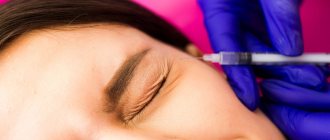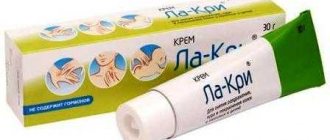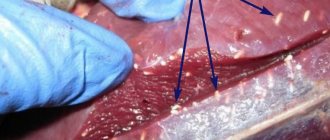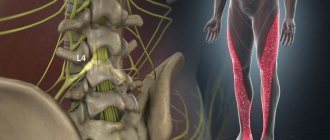“Beauty requires sacrifice” - this is how almost every headline in popular publications begins, or sounds from the lips of familiar beauties who have already seen this from their own experience.
Sacrifice concerns a low pain threshold in females. After all, most beauty procedures involve mainly injections.
But, fortunately, a separate group of drugs has already been developed, which is designed to reduce or relieve the patient of pain during the procedure, and these are anesthetics. Some of the oldest drugs that are in demand among most people, and without which it is impossible to imagine surgical interventions.
Today our article will be devoted to situations that, unfortunately, can happen in the office of every cosmetologist - allergic reactions to anesthetics, namely lidocaine.
If a critical situation arises related to an allergic reaction to anesthetics, we recommend that you immediately proceed to action.
Anesthetics in cosmetology and “pain management” by cosmetologists
In most cases, any ordinary and potential client of a cosmetology salon has three basic wishes and expectations from a future doctor’s visit:
- safety;
- efficiency;
- painlessness.
All qualified specialists know that pain can cause fainting, hypertensive crisis and even myocardial infarction.
In addition, it is worth noting that when we feel pain, our body releases a certain amount of inflammatory mediators, which directly affect the rate of restoration of the skin and damaged tissues. Therefore, it is not surprising that anesthesia has become a legal and important part of cosmetology.
But not everything is so smooth, even with the help of anesthetics. Because there is always a risk of having an allergy to painkillers.
Types of anesthesia that can be used in cosmetology:
- Local application anesthesia.
- Infiltration anesthesia.
- Conduction anesthesia (perineural and endoneural).
We will also consider the main types of anesthetics that are widely used in cosmetology:
- Esters (procaine, dicaine, butamben)
- Amides (lidocaine, articaine, prilocaine)
Amide MAs, unlike ether MAs, are stable in solutions and are slowly hydrolyzed by liver microsomal enzymes. Therefore, amides may have a toxic effect on the body of those patients who have certain liver disorders due to the extended half-life of the drug.
Allergic reactions to anesthetics are an unpleasant side of pain management procedures, but they are present in cosmetology practice. Every specialist should know the correct procedure in the event of critical situations such as anaphylactic shock.
Anaphylactic shock - emergency care
One of the most dangerous types of complications is anaphylactic shock - an acute and immediate allergic reaction to antigens, which in 10-20% of cases has fatal consequences (without timely administration of adrenaline). Therefore, the reaction and actions of a cosmetologist must be instant and accurate.
First aid for anaphylactic shock
- 0.1% adrenaline solution 0.2-0.5 ml intravenous / sublingual injection every 15-20 minutes. (until the patient's condition stabilizes).
- If anaphylactic shock develops after injection of the drug - 0.15 - 0.3 ml of adrenaline hydrochloride 0.1% in the place where the allergen was injected.
- Dexamethasone – 8 mg (intravenously).
- Antihistamine drugs of the 2nd and 3rd generation - Tavegil, Loratadine, Cetrin, Telfast, Erius.
- Further treatment should be aimed at maintaining a normal level of blood pressure (if necessary, use vasoconstrictors, restore bcc), eliminating bronchospasm - administering Euphyllin 2.4% intravenously and slowly (10 ml), Drotaverine hydrochloride (NO-SPA) 40 mg intravenously.
- Hospitalization in a specialized department of a medical hospital.
True allergic reactions to drugs, with the participation of immunological mechanisms, develop quite rarely, and account for 1% of all drugs included in this group.
Allergic reactions of the immediate type (with the participation of IgE) can manifest themselves in the form of urticaria, angioedema, symptoms of allergic rhinitis, conjunctivitis and anaphylaxis reactions, the most dangerous of which is anaphylactic shock.
As for lidocaine, it is used as a local anesthetic for various cosmetic procedures, such as: peeling sensitive and hypersensitive skin; removal of papillomas; when introducing fillers; applying/removing cosmetic stitches or thread lifting procedures (mesothreads).
First aid for anaphylaxis
In such a difficult situation, only immediate qualified medical assistance can help. This can save a person's life.
Algorithm of actions
- Stop the intake of the substance that caused anaphylactic shock (contact, injection of the substance, food, inhalation of vapors, and other options). In case of an insect bite, you must immediately remove the sting and apply ice to the affected area. If anaphylaxis is caused by food, then you need to remove its remains from the oral cavity.
- Call an ambulance. In such a difficult situation, a call to an ambulance is mandatory, regardless of the symptoms of anaphylactic shock. The shock may be biphasic and may recur after 1-3 days.
- To alleviate the condition, the patient should lie on his back with his legs raised above his head.
- In case of nausea, you need to turn the patient's head to the side in order to prevent vomit from entering the respiratory organs.
- Open the windows to allow fresh air to flow, unbutton the patient’s clothes to make breathing easier.
- Cleanses the mouth to make breathing easier.
- If you have dentures, you need to remove them. If there is mucus in your mouth after vomiting, you need to clean your mouth with water.
- Check breathing and pulse. If there is no pulse, artificial heart massage is necessary. If the patient stops breathing, the process of artificial respiration will be ineffective due to swelling of the larynx. An intramuscular injection of a 0.1% adrenaline solution can help a patient and save his life.
If a person has had cases of anaphylactic shock before, he should always have with him a syringe pen containing a single dose of adrenaline.
In medical, there is an allergist-immunologist who will help you find out the causes of your allergic reactions and help prevent anaphylactic shock. He will give all the necessary recommendations and treatment plan. We can provide all allergen tests. The doctor conducts consultations at home and in the clinic (in Zapadny and in Alexandrovka). The cost of the medical center’s services can be found in the “Price” section or by calling the 24-hour hotline +7 (863) 320-19-87.
Watch a useful video
The mechanism of action of lidocaine and its scope of application
After injection into soft tissues, lidocaine reduces the permeability of cell membranes to sodium ions. Already after 45-90 seconds after the administration of lidocaine, the speed of nerve impulses decreases and the pain syndrome decreases. The duration of action of lidocaine ranges from 1 to 1.5 hours, depending on the chosen dose of the drug.
There are different forms of lidocaine that are used for local anesthesia: sprays, gels, creams, ointments and injections.
The most popular cosmetic procedures - bioreparation, biorevitalization, contour plastic surgery, mesotherapy, thread lifting - are associated with pain.
Allergic reactions to lidocaine
There are three degrees of development of allergic reactions of the human body to the action of an allergen:
I – mild degree of reaction
Dermatological symptoms (itching, redness, peeling of the skin, urticaria, allergic rhinoconjunctivitis).
The doctor must have in the medicine cabinet non-fluorinated GCS creams and antihistamines of the second and third generation + potassium-sparing diuretics.
II – average degree of reaction
• Hives, itching
• Angioedema (Quincke's edema)
What to do if these symptoms occur:
- Call an emergency medical team.
- A 0.1% solution of adrenaline 0.2 - 0.5 ml must be administered subcutaneously every 15 - 20 minutes until the client’s condition stabilizes, or 60 mg Prednisolone / Dexamethasone - 8 mg intravenously.
- Taking second and third generation antihistamines: Loratadine, Cetrin, Telfast, Erius. Protease inhibitors and kallikrein Kontrikal (30 - 40 units intravenously in 300 ml of 0.9% NaCl solution)
- Eczematous dermatitis, erythema multiforme, fever (up to 39 ℃), poly- and monoarthritis, toxic-allergic myocarditis.
III - severe degree
- Hematological reactions, nephrotic syndrome, hepatitis, myocarditis with rhythm disturbances.
- Lyell's syndrome (toxic epidermal necrolysis).
- Reflex bronchospasm, attack of bronchial asthma.
- Anaphylactic shock.
Anaphylactic shock as one of the most dangerous types of complications
In everyday life, systemic allergic reactions can occur after contact with many substances. An international study (ISAAC) showed that 20-25% of the world's population has one or another type of allergic disease. Moreover, this figure has tripled over the past 25 years.
Unfortunately, in Ukraine, we do not have reliable data on the incidence of this complex pathological condition among adults and children. However, the incidence of anaphylaxis deaths in the US and UK, which is 0.4 per million people (1-3 people annually), highlights the importance of training and awareness.
The most threatening type of allergic reaction in the human body is anaphylactic shock (AS). This reaction can develop due to the interaction of the antigen with immunoglobulin (IgE), which leads to the release of mediators and various systemic manifestations (skin, respiratory, cardiovascular failure, gastrointestinal).
Anaphylactic shock is an acute systemic reaction of the body's hypersensitivity to an allergen, which threatens human life and is accompanied by severe hemodynamic disturbances (failure of the circulatory system and hypoxia in all vital organs). Typically, the speed of reaction to an antigen can vary from a few seconds (minutes) to 5 hours from the moment of contact.
The main causes of anaphylactic shock
The causes of the occurrence and course of anaphylactic shock for each person are of a purely individual nature. An insect bite or contact with household chemicals, cigarette smoke and spicy foods, medications and animal hair are just a small list of allergens that can cause anaphylaxis in a person.
To avoid its occurrence, always carry first aid medications (antihistamines) with you.
Tell your colleagues and family about the signs of shock and emergency first aid. This article is for informational purposes only, please consult your doctor for details! Ask your doctor about contraindications and side effects.
Anaphylactic shock: pathogenesis and etiology
This term was first coined in 1902 to refer to severe conditions and fatal reactions in dogs after repeated administration of sea anemone tentacle extract.
The development of anaphylactic shock (or anaphylaxis) is associated with a number of etiological factors caused by IgE mechanisms:
- medications (taking local anesthetics, sleeping pills, colloid solutions, metronidazole, cytostatics, nitrofurans, β-lactam antibiotics, B vitamins, folic acid, tetracycline, muscle relaxants, monoclonal antibodies, β-blockers, sulfonamides)
- vaccines (measles, whooping cough, tetanus, rubella, typhoid, diphtheria toxoid)
- enzymes (chymotrypsin, trypsin, streptokinase, aprotinin, penicillinase)
- antisera (tetanus, diphtheria, antilymphocyte globulin)
- taking hormones (parathyroid hormone, insulin, ACTH, progesterone, vasopressin, calcitonin)
- diagnostic agents (radiocontrast agents, decholin, fluorescein)
- animal saliva and venom (insect and snake bites)
- food products (shellfish, fish, peanuts, soybeans, nuts, spices, dairy products)
- inhalation allergens (household, epidermal, insect, pollen)
This list can be continued, but it is drugs, food products and insect venom that are in the TOP among the common factors causing anaphylaxis.
Nutritional supplements (sulfites, monosodium glutamate), physical activity, hormonal changes, blood transfusions, and topical medications are among the least common etiological factors for the occurrence of AS.
You can also mention the causes of anaphylaxis and AS caused by IgE-independent mechanisms:
- Transfusion of blood or its individual formed elements.
- Hypothermia and physical activity.
- Systemic mastocytosis.
- Idiopathic anaphylaxis.
- The body's reactions to radiocontrast agents, opioid analgesics, aspirin and non-steroidal anti-inflammatory drugs.
This also includes factors (including individual ones) that are related to the client and external circumstances:
- Lifestyle – bad habits (smoking, alcohol, drugs), physical activity, taking non-steroidal anti-inflammatory drugs.
- Individual factors of a person - age (especially the elderly), gender, infections, menstrual cycle, diet and nature of nutrition, psychogenic stress.
- Past / concomitant diseases - bronchial asthma, cardiovascular diseases, blood pressure, increase in the basic concentration of serum tryptase.
Pathogenesis of anaphylactic shock
The pathogenesis of anaphylactic shock is caused by a type I allergic reaction, which develops in a highly sensitized organism.
The mechanism of development of the immune response occurs as follows: recognition of the allergen, its processing and presentation, the union of T and B lymphocytes, the formation of duplicate plasma cells that form antibodies and immune memory cells.
A very large amount of IgE during anaphylactic shock leads to an immediate hyperergic reaction.
Phases that form an immediate allergic reaction:
Immunological phase
- The antigen comes into contact with the nasal mucosa, with the surface of the skin, bronchi, gastrointestinal tract, or with the macrophages themselves.
- The latter absorb the allergen and transmit it to type 2 T helper cells, which begin to produce cytokines that stimulate the proliferation of B lymphocytes, their transformation into plasma cells with the subsequent production of IgE antibodies.
- Combination of antibodies (lgE).
- IgE antibodies are fixed on the surface of mast cells and basophils in the blood.
- Repeated contact with a familiar allergen.
- Communication of the allergen with antibodies on the surface of basophils and mast cells.
The pathochemical phase is characterized by the release of mastocytes + basophils, after the formation of immune complexes on the cell surface. Mediators C3, C5a-anaphylotoxins become part of the basophils and mast cells formed during degranulation.
The pathophysiological phase is the direct activity of these mediators on specific receptors of tissues and organs. This hypersensitive reaction is characterized by dilation of peripheral blood vessels, spasm of smooth muscles of organs, release of fluid from blood vessels (cardiovascular dysfunction), formation of edema of the respiratory tract and excessive secretion of mucus.
The clinical phase is final. It manifests itself in the form of anaphylactic shock and similar allergic reactions of the IgE-dependent type.
Symptoms of anaphylactic shock
The condition of anaphylactic shock has a number of disorders, most of which are not specific:
- Hemodynamic disorders can lead to a critical drop in blood pressure (BP), the development of tachycardia and loss of consciousness.
- The action of prostaglandins, histamine, thromboxane, extravasation of fluid from the vascular bed can influence the development of bronchospasm, laryngospasm and laryngeal edema.
- On the part of the skin and mucous membranes, you can observe tingling, warming (often these are the first symptoms of anaphylactic shock), hyperemia, urticaria, itching, Quincke's edema. In more complex cases, a person develops a marbled or pale cyanotic skin tone and a significant decrease in the temperature of the extremities.
- Back pain, nausea and diarrhea may occur.
- From the central nervous system, headaches, dizziness, feelings of fear and severe weakness may occur.
Characteristic symptoms of anaphylaxis
After direct contact with the allergen, the progression of the allergic reaction can take from a few seconds to 5-6 hours. That is why the mechanism of shock development is very problematic to predict. The overall development and course of an allergic reaction in no way depends on the concentration, amount of the substance and the way in which it entered the human body. Even with ultra-low dosages, anaphylactic shock can develop. However, it should be noted that when the allergen enters the body in large quantities, this significantly increases the severity of the lesion and significantly complicates the process of its treatment.
The primary sign that makes it possible to establish anaphylaxis with almost 100% probability is sharp and severe pain in the place where the injection or insect bite was made.
If a person ingests an allergen with food, pain will be observed in the abdominal cavity or under the ribs.
Other symptoms indicating the occurrence and progression of anaphylactic shock may be:
- severe swelling and swelling in the area where contact with the allergen occurred;
- local itching in a separate area of the skin, which can gradually spread to the entire body;
- rapid drop in blood pressure;
- gag reflexes, nausea, upset stomach, mucous eyes;
- pale skin, blue lips;
- problems caused by poor hearing and vision;
- the appearance of a weakly motivated feeling of fear, spasms of the limbs.
It must be remembered that it is impossible to cope with anaphylactic shock on your own. Emergency medical assistance is required.
Stages of anaphylactic shock
There are several stages/phases that can be used to characterize the condition of anaphylactic shock and its course.
- The mild phase of shock is characterized by rashes and itching of the skin; heat and burning; runny nose and spasmodic cough; weakness and dizziness, pale complexion and lethargy.
Symptoms such as difficulty breathing, shortness of breath, nausea, abdominal pain, depression, lethargy and tachycardia may also be observed.
- The moderate stage of anaphylaxis occurs when the patient experiences general weakness, shortness of breath, blurred vision, numbness of the fingers/tongue, pain in various locations (abdomen, chest, heart, muscles, joints, lower back). Heart sounds are muffled or dull, and arrhythmia may occur. Severe sweating, nausea, bloating and diarrhea.
- The severe (fulminant) phase of anaphylactic shock occurs suddenly, and the patient may not have time to report his critical condition to the doctor. The whole body becomes pale (cyanosis in places), the pupils are dilated, and cold sweat appears on the forehead. There are no breath sounds, tonic and clonic convulsions, defecation and urination can be observed. In the end, the body suffers from vascular collapse and goes into a coma.
There are cases when the course of anaphylactic shock can be confused with psychopathological conditions and anaphylactoid reactions, such as loss of consciousness and fainting.
But it is worth remembering and monitoring the reasons for the appearance of the immune response. Also, less commonly, anaphylactic shock is similar to coma, aspiration, myocardial infarction, thromboembolism, sudden pneumothorax, hyperventilation syndrome and cold urticaria.
The nature of the course of anaphylactic shock
a) Malignant is characterized by a rapid decrease in blood pressure - BP (diastolic - up to 0 mm Hg), impaired consciousness and the appearance of bronchospasm. This form of AS is quite resistant to intensive therapy and progresses rapidly in parallel with the development of severe pulmonary edema, a stable drop in blood pressure and deep coma.
b) Acute benign (typical) course of AS is described as a depressed state, which is accompanied by a moderate and functional change in vascular tone + signs of respiratory failure. “Benign” in terms of real chances for a quick recovery, with timely and adequate treatment from a specialist.
c) The protracted nature of AS is observed after active anti-shock therapy, which provides a temporary / partial effect. The symptoms are mild, unlike the 2 previous conditions, but quite often lead to complications (pneumonia, hepatitis, encephalitis). The prolonged course of anaphylactic shock is directly related to the administration of long-acting drugs.
d) Recurrent course (repeated state of shock) occurs due to the localization of the first symptoms of anaphylactic shock. After re-entering the body, allergens become more resistant to therapy and have more serious consequences.
e) The abortive nature is considered favorable from the point of view of the speed of localization. It is expressed in the form of a typical form of anaphylactic shock + hemodynamic disturbances (including blood pressure) are minimally expressed.
Each stage of anaphylactic shock requires immediate response and action from a specialist.
Rate of development of anaphylactic shock
The speed of allergic shock depends not only on the type of allergen, but also on the way it enters the body. The most rapid anaphylaxis occurs when the irritant enters the bloodstream directly, that is, with intravenous or intramuscular injections.
If we are talking about insect bites or allergen contact with the skin (plant pollen, creams and ointments, etc.), it takes some time for the substance to spread throughout the body. Food anaphylaxis can occur 1.5-2 hours after consuming a prohibited product.
There are several forms of acute reaction of the body to the pathogen. Fulminant shock - develops instantly in 1-5 seconds. Most often, the result of such a phenomenon is death, since there is no time to provide help. It is possible to save only those people who developed anaphylaxis during medical procedures if specialists noticed the reaction in a timely manner and have the necessary drugs for resuscitation.
In the acute form, anaphylactic shock develops within 10-30 minutes. That is, a person feels a deterioration in his condition and can seek medical help. When it comes to the subacute form, the first signs of anaphylaxis appear within 30-60 minutes, and in most cases it is possible to provide the necessary assistance even before the onset of the acute form.
Diagnosis of anaphylactic shock
This process is not very different from a traditional allergology examination, and includes the following steps:
- Collecting an allergy history from the patient.
- Assessment of clinical symptoms.
- Carrying out diagnostic tests “in vivo” exclusively as prescribed by an allergist and with his participation.
- Application of instrumental, radiological, functional, genetic research methods.
- Detection of the level of tryptase, histamine, blood plasma, urine metabolites, IgE antibodies.
Prevention of AS
Primary prevention of shock
It involves preventing human contact with the allergen:
- elimination of bad habits (smoking, drug addiction, substance abuse)
- control over the quality production of medicines and medical devices
- combating environmental pollution with chemical products
- ban on the use of certain food additives (tartrazine, bisulfites, agar-agar, glutamate)
- combating the simultaneous prescription of a large number of drugs by doctors
Secondary prevention
Promotes early diagnosis and timely treatment of the disease:
- timely treatment of allergic rhinitis, atopic dermatitis, hay fever, eczema
- conducting allergy tests to identify a specific allergen;
- careful collection of allergy history
- indication of intolerable medications on the cover page of the medical history or outpatient card in red paste
- conducting sensitivity tests before IV or IM administration of drugs
- Observe patients after injection for at least half an hour
Tertiary prevention
Prevents recurrence of the disease:
- maintaining personal hygiene rules
- Frequent cleaning of premises to remove house dust, mites, insects
- ventilation of premises
- removing excess upholstered furniture and toys from the apartment
- precise control of food intake
- use of sunglasses or a mask during the flowering period of plants
- Source 1
- Source 2
- Source 3
Prevention of anaphylactic shock
Although deaths from anesthetics (or insect bites) account for a minority of the statistics, preventative measures should be taken to reduce the risk of anaphylactic shock.
- Detailed and in-depth analysis of the client’s allergic history, data on drug intolerance; pharmacological history included in the medical documentation.
- Conducting tests to identify the allergen before administering the required dose of anesthetics for patients with a more complex allergic history.
- Assessment of the system of medications that the patient is taking (pharmacotherapy) at the moment.
- Mandatory and constant monitoring of the client throughout the entire time after the introduction of the allergen (especially the first 30 minutes).
- Refusal of immunotherapy for uncontrolled bronchial asthma.
- Arrangement of an office or clinic (emergency medical kit with the presence of adrenaline), and training of all members of the staff in case of drug-induced AS or similar serious conditions of patients.
Even after the active elimination of acute manifestations of anaphylactic shock, there are no favorable and definitive prognoses for the completion of the pathological process. We can talk about a positive prognosis for the patient only after 5-7 days of rehabilitation.
The TOTIS company takes care of its clients and offers drugs for safe contouring and biorevitalization procedures from the Austrian pharmaceutical giant CROMA and the SAYPHA line:
- Saypha Rich (18 mg/ml) is a sterile, purified, transparent, isotonic, biodegradable gel for skin biorevitalization procedures. Provides a long-lasting “anti-age” effect + prolonged hydration.
- Saypha Filler (23 mg/ml) is an intradermal hyaluronic acid filler for the correction of superficial and medium-deep wrinkles, as well as for increasing lip volume.
- Saypha Volume (23 mg/ml) is an intradermal hyaluronic acid filler for correcting deep wrinkles and creating volume in the middle third of the face, as well as voluminous modeling of the lips.
Very soft fillers that are easily and painlessly distributed under the skin and guarantee the most natural result. These products can be combined with each other and not worry about comfortable administration, thanks to the unique CROMA syringe + ultra-thin terumo needle.
The article was written with the information support of a dermatocosmetologist, methodologist of the medical information section of the TOTIS company - Natalia Malichenko
What actions should be taken when providing first aid for anaphylactic shock?
After you have called and summoned an emergency medical team, you must take the following sequence of actions:
- completely limit contact with the substance that caused anaphylaxis. If the allergen enters the body orally, you should rinse your mouth thoroughly. Ice should be applied to the insect bite site or injection site and treated with some kind of antiseptic, for example, an alcohol-containing solution;
- place the patient in a horizontal position, slightly raise his legs or simply place a soft pillow or blanket under them;
- open the window to provide fresh air. Unfasten constrictive clothing that prevents you from breathing freely;
- if an antihistamine (suprastin, fenkarol) is available, it should be given to the victim;
- In case of sudden cardiac arrest, massage should be performed. To do this, you need to clasp your hands and make 10-15 presses on the sternum, alternating them with two breaths into the patient’s mouth.








